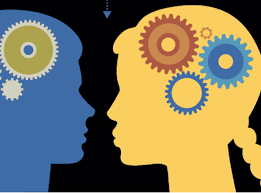Online MindBridge NLP Coach Certification Training
-
Managers as Coaches
-
1 - Introduction to Professional Life Coaching and NLP8 Topics
-
2 - Fundamentals of Influential Communication5 Topics
-
3 - a. Characteristics of Excellence in Communication2 Topics
-
4 - a. Identifying Thinking Styles1 Topic|1 Quiz
-
4 - b. Rapport
-
5 - a. Values Clarification
-
3 - b. Submodalities
-
7 - a. Power of Questions
-
6 - a. Anchoring Techniques2 Topics
-
7 - Clarifying Communication5 Topics
-
7 - b. Intake- Initial Pre-Coach Session
-
8 - Criteria3 Topics
-
8 - a. Perceptual Flexibility - Perceptual Position Quiz3 Topics
-
8 - b. Well-Formed Outcomes3 Topics
-
9 - 3 NLP Techniques Demonstrations
-
10 - Identifying Mind Maps
-
10- a. Meta Program Psychometric Quizzes
-
10 - b. Key Meta Program Patterns Explained7 Topics
-
10 - c. NLP Coach Session Demonstration
-
10 - d. Evaluation Forms -Outcome Coach Session
-
10 - e. Evaluation Video of NLP Coaching Demonstration
-
11 - NLP Coaching Sessions2 Topics
-
11 - a. Evaluation of Demo - Categories of Experience
-
11 - b. Directionalizing the Session
-
12 - Insights and Just for the fun of it!
3 – a. Characteristics of Excellence in Communication
Jerry December 28, 2020

What makes a great communicator?
• Outcome Specific – The clarity of the message
• Sensory Acuity – Attention to the listener and their listening style
• Behavioral Flexibility – Having expanded choice in your delivery style
• Congruence – Making sure that your verbal and non-verbal message is a match and coming from your value system
“An effective communicator accepts the sole responsibility for getting the responses that s/he wants.“

The components of this are:
Outcome Specific
-
- To know exactly what you want to communicate.
-
- The evidence that demonstrates the achievement of the outcome
An outcome is the result you want… defined in terms of the way you would like to see things happen, the way you want to feel, and what you will hear when you have reached your specific result. An outcome is based on sensory experience.
To be outcome specific combines the ability to hold in mind, in explicit detail, what you want/need to see, hear and feel and the ability to articulate that concept to another in a way that is stated in a positive language framework and that the listener can understand.
Sensory Acuity
-
- The ability to recognize verbal and non-verbal patterns of communication and thinking in yourself and those around you.
-
- The expanded use of your five sensory experiences to detect when your communication is getting through and when it isn’t.
-
- A heightened ability to notice a shift in the listener’s experience through minimal cues.
Sensory acuity is placing your attention on your physical sense experience and noticing things that you had not previously noticed. Sensory Acuity is simply your skills of observation.
Sensory acuity is recognizing the difference between subjective evaluations and objective information and a requisite skill for rapport. Pattern recognition is fundamental in sensory acuity skills.
Flexibility of Behavior
-
- Knowing how to do something differently if what you are doing (saying) is not working.
-
- Having choice in the patterns of your communication styles to adjust your behavior and expression with respect to the listener’s unconscious patterns.
Congruence
-
- All aspects of your delivery need to be in agreement with what you want.
-
- The alignment of all of your different parts will produce congruence in communication.
The characteristics of excellence in communication and in any area of endeavor are developed through awareness skills such as chunking, sensory/non-sensory based observation skills, the entire range of rapport skills and working with the outcome frame.
When done please take the time to reflect on the lesson and post a comment or question below. What insights did you gain? What questions arose for you?
Also, consider responding to the comments of others to start a dialogue.
After you have posted your comment hit the Mark Complete Button and move on to the next topic
Responses
You must be logged in to post a comment.

Understanding and the ability to recognize verbal and non verbal patterns is essential in understanding a communication. Use of sensory experience helps the listener to understand more fully the communication delivered. Pattern recognition is an important aspect of sensory acuity skills development. Congruency is when there is alignment with the communication delivered.